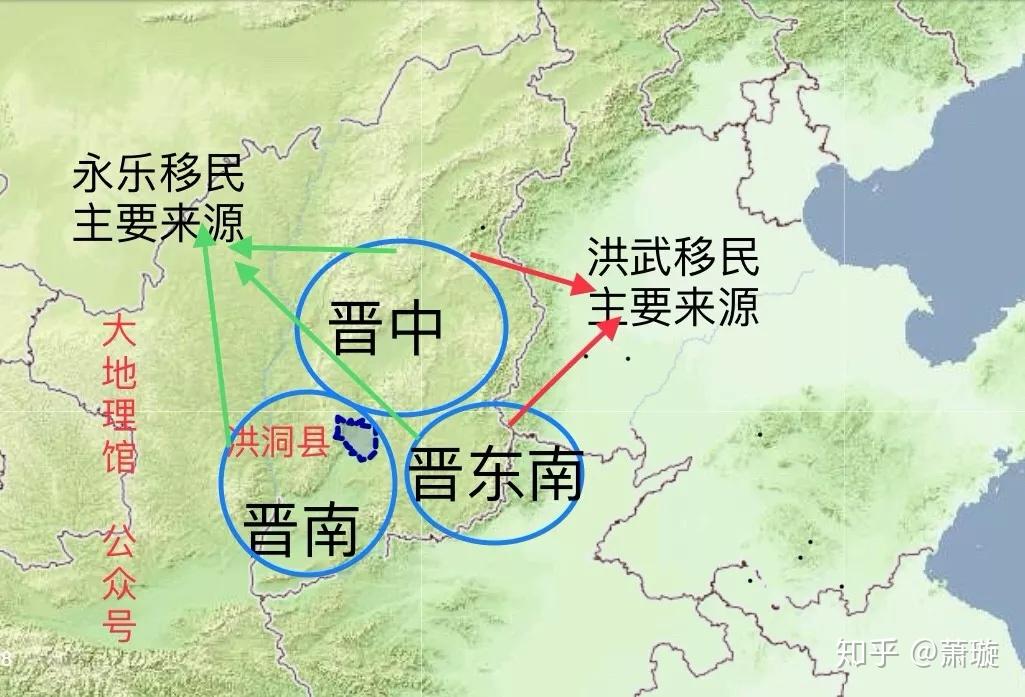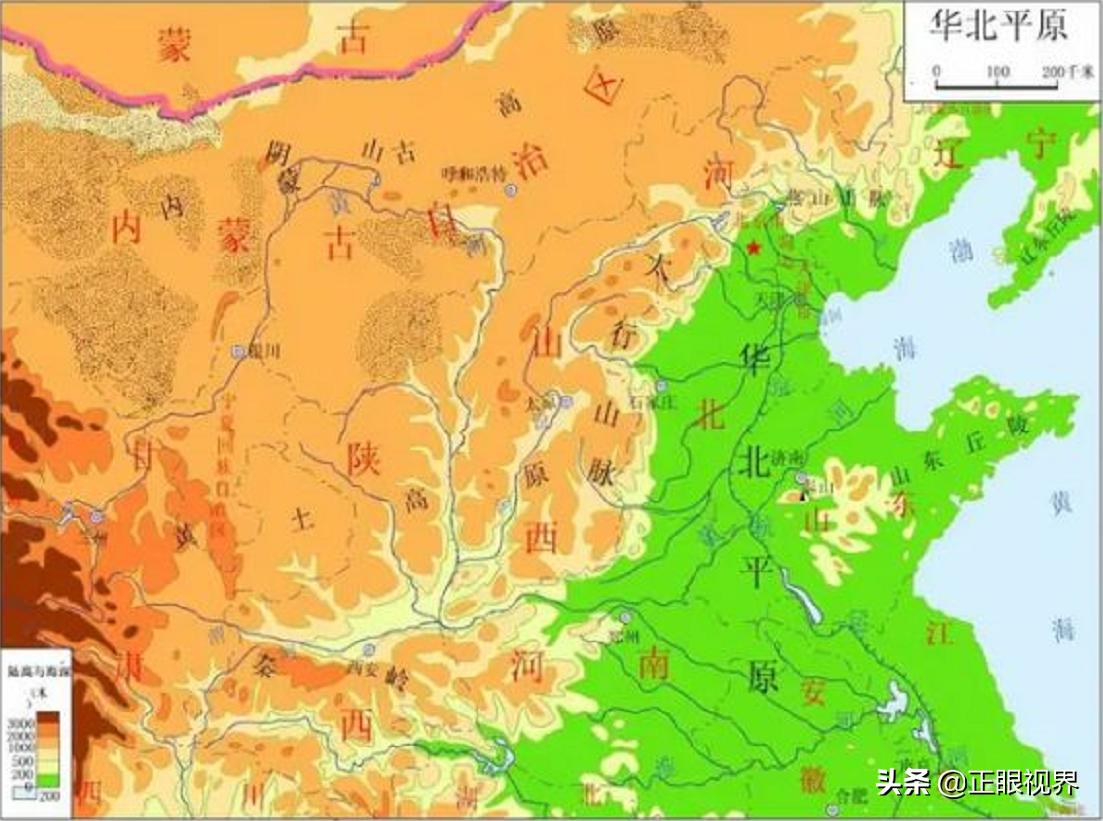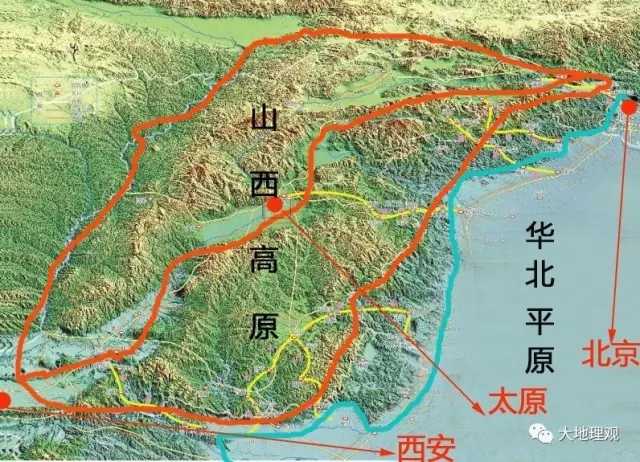明初山西的轰轰烈烈的移民是怎样变成“洪洞移民”的? 山西人主要移民华北三省。 怎么变成了“11省移民”? 明初,山西输出移民超过100万。 洪洞县近九万人就算全部搬出去,也只占人口的十分之一。 然而,这是不可能实现的。 但在山西及各地非山西移民的家谱中,往往将洪洞槐树视为他们的故乡。 洪洞的大槐树,其实是山西乃至整个明初大移民的缩影。 那里的某个碎片沦为精神家园——当地士绅和官员的大力宣传再次影响了移民和非移民地区。
关于洪洞的发音:根据山西方言,“通”是两声读的,《辞海》就采用了这种说法; 而《现代汉语词典》和《新华字典》则坚持标注四声。
大移民史上:洪洞大槐树是一个流行笑话
纵观中华民族几千年的历史,迁徙几乎从未停止过。 或为了避乱,或为了安居某地,或为了支援边疆,不同程度的移民几乎分布在长江南北的每个省区。
在波澜壮阔的移民史上,有金衣关南迁、唐宋客家人南迁、明初山西大规模移民、清代湖广填四川、近代则有溪口、关东、南阳。 其中,明初的“山西大移民”是古代移民史上影响最大的事件,其衍生的传说和笑话广为流传。
历时四十多年的大迁徙,将最大的灵气集中在了山西洪洞的巨槐树上。 不同时期的同一地点都有参天槐树,成为中国最著名的“寻根问祖”之地之一。
在中国,尤其是北方,流传着许多有关洪洞大槐树的民谣。 最著名的是:
“问我祖先从哪里来,山西洪洞有一棵大槐树,我祖先故居叫什么名字?就是大槐树下的一个老鸟巢。”
相关传说有“手浮”、“劈趾”等。 大槐树和它所在的洪洞,被很多人牢牢视为祖先的出生地。
元末明初,中原地区战乱不断。 建国之初,发生了靖难之战。 而山西,山清水秀,地处战乱大后方,遭受的侵扰较少。 明初,北方发生大规模人口迁移,山西并未迁出。 这是毋庸置疑的事实。 洪洞作为当时晋南经济文化重镇,也是重要的移民输出地之一。
但历次大迁徙,特别是明初国家政策推动的大迁徙,其规模之大、持续时间之长、范围之广,绝非一个传说或几首歌谣所能概括的。 目前流传的诸多传说和所谓“记载”,影响深远,而且在一些媒体的帮助下,久而久之,就被公众视为历史事实。
“大槐树”及相关传说影响越深、流传时间越长,其背后的历史事实被掩盖的就越多。 作者想通过提出这些问题,试图还原“大槐树”背后复杂而真实的情况。
洪洞在山西移民输出中的地位如何? 洪冬是如何脱颖而出,成为主角的? 寻根问祖,巨槐是如何传播的?
山西地貌格局
洪洞县在山西省的位置
移民前夕:华北人口锐减不仅仅是明初战乱造成的
中国北方,特别是华北平原,自宋金以来,一直处于动乱之中。
金人进入中原后,特别是后期,将大片耕地划给军户。 一段时间后,在不善耕种的女真人的管理下,土地由肥沃变为贫瘠,逐渐变得不毛之地。 金人于是去掠夺其他农田。 农业生产萎缩导致人口大量流失。
记载金朝历史事件的传记史书《大金国志》记载,这一带“野草丛生,狐兔出没”。 后来蒙古贵族掠夺了大量人口,将他们用作工匠和奴隶,使这些地区失去了大量农业人口。
北方很多州郡都分封给国王、功臣或者国家的亲属,管辖下的人口是他们的私有财产,不能随意迁移。
到了13世纪中叶,耶律楚材力劝停止退耕还牧政策,使华北地区恢复了农业生产。 然而,随后发生的瘟疫却让华北陷入了灭顶之灾。 据欧洲和阿拉伯的记载,14世纪中叶,中国北方盛行一种源自黑土的瘟疫。
历史学家米歇尔·多斯认为,起源于中国北方的瘟疫首先蔓延到中亚,然后经地中海传播到欧洲,引发了中世纪最大的瘟疫,即所谓的中世纪黑死病。

《元史五行志》提到1313年、1354年、1358年发生在京城的三大瘟疫。仅1358年,就有20万来自山东、河南等地的流民在北京死亡。 在此期间,元朝三位皇帝泰定皇帝、明宗皇帝、文宗皇帝均在上都去世。 元朝的很多皇帝都是短命的,史书上并没有透露原因。 皇帝的遭遇很可能与瘟疫有关。
与此同时,一位埃及作家写道:
“他告诉我们,在疾病传到埃及之前,就已经在大汗的土地上肆虐了。三个月的时间,也失去了十六位王子,大汗的蒙古武士也涌入了这座城市,知道皇帝他自己和他的儿子们也是从疾病开始的,中国的人口在传染病的袭击下大幅减少。”——引自葛建雄主编的《中国移民史第五卷》
元朝末年,农民起义相继发生。 随着朱元璋大军北上,本来就人烟稀少的华北雪上加霜。 《明史》卷七记载:“淮河以北草木茂盛”。 ??淮河以北,也就是华北平原,以前的农田已经长满了杂草。
随着明初政权的稳定,作为重要农业区的华北各省大片土地荒芜,移民不可避免。 这导致了洪武时期政府组织的移民。 永乐年间,山西向北方各省的移民不断推进。
很多自媒体文章只关注山西移民的原因,没有区分元末的战争和明初的“靖难之战”。 事实上,元末华北的战争主要以过境为主,并没有太多的缠绵。 山东、河北、河南等地土地贫瘠、人口稀少,主要是金元时期遗留的问题。
朱元璋与张士诚、陈友谅等人作战的江南地区,战后仍是重要的人口输出地; “靖难之战”也主要影响山东东部和河北地区,但那里人口稀少,仍是金元时期人口的长期积累。 造成的。
山西移民主要迁往华北平原,“洪洞大槐树”仅见于家谱。
明初,华北平原、河北燕山以南、山东泰山以西以及河南、安徽、江苏的淮北地区,人烟稀少。 政府组织大量移民,致富州县,恢复农业生产。 这是不争的事实。
学者们也基本达成共识,大规模移民可分为洪武和永乐两个时期,山西是重要的移民输出地。
明洪武二十一年(1388年),朱元璋在刘九皋的建议下,开始将山西人民迁往河北中南部、河南北部和山东西部平原。省。 当时的人口输出地区是晋东南部。
明太祖朱元璋,年号洪武
于是,山西泽、鲁两州的无地百姓被转移到彰德、真定、临清、贵德、太康等闲置地区,并被勒令随意安营扎寨,免赋赋税,奴役三年,发给各户二十锭钞票,准备农具。” (《明史:饮食与火志》)
这拉开了明初山西大规模移民的序幕。
这次山西向河北的大规模人口迁移,从1388年持续到1395年,迁徙地是晋东南的泽、泸州,大致就是今天的晋城、长治地区。
台湾历史学家徐宏通过详细考证指出,这次移民记录中彰德(今安阳)、卫辉、广平、大名、东昌、开封、怀庆七州的移民总数为100034人。
若算上此前的真定(今石家庄地区)、贵德(今商丘地区)、顺德(今邢台地区)等地,洪武年间从山西迁往河北等地的人口将超过70万。
注意! 此次大规模搬迁并未涉及著名巨槐所在的洪洞县。
明朝第二位皇帝建文帝在位期间,燕王朱棣通过“靖难之战”夺得了皇位。 朱元璋时期,移民基本解决了北方人口分布不均的问题,但也受到军事灾难的影响。 结果,战争影响最深远的河北等地的人口稀少问题仍未得到解决,移民目的地仍然是“地小人多”的山西。
1403年9月开始,山西向河北的又一次大规模移民开始:这次人口输出目的地仍然是晋东南地区,包括泽、鲁、辽、秦、汾州,还增加了太原。 平阳二府(今临汾地区)。 此次移民范围扩大到今山西中部、晋东南和临汾地区。
明朝开国皇帝朱棣,字永乐
几乎同时,也有泽州、泸州的移民前往河南豫州(今方城)。

永乐二年至三年(1404年—1405年)期间,朝廷迁至太原等地,并迁居北京(包括今河北地区)。 户数为一万户。 按一个5口人的家庭计算,大约有5万人。 此次移民输出地区涉及2地5州,包括今晋中、临汾、晋东南、吕梁地区。
永乐五年(1407年),朝廷将今山西临汾、晋东南的人口,以及山东登州、莱州的人口迁至山东东部。 从这两个省输出的人数大约占一半。
以上均为官方组织的移民。 此外,还有一些私人公民主动迁出国外。
明朝时期,明朝开国皇帝朱棣在山西多地遭受灾害时,出现了大规模的群众自发迁移。 《山西移民史》主编安杰生先生推断,永乐年间从山西移民的人数超过10万人。
综合回顾上述人口迁移的记录:
至于网上和民间广泛流传的“洪洞大槐树移民”,在官方修订的清朝历史《明史》中并没有提及,也不是明代官方正史书《明世录》中曾有提及。 主要取材于各地的地方志、家谱。
史书、方志、家谱构成了我国的史料体系,但三者中,三者的可信度和权威性最高,史书最高,方志次之,家谱最低。
对于此事,民国时期担任山西省政府主席的赵代文表示,洪洞大槐树之说“史无发现,谍报详述”。 族谱,即族谱。
现代学者考证,“洪洞大槐树”移民分布在11个省(区、市)、227个县。 主要依据是地方志、家谱和民间传说。
像山西移民这样的重大事件,在国家历史上一般不会被掩盖。 但地方志、家谱是由地方政府和家族编撰的,往往存在研究不严、执着夸张等问题。 另外,值得注意的是,记录洪洞槐迁徙的资料大多是在记录洪洞槐迁徙的资料中。 相对较晚,有的甚至被当代修订。 网上提到的《温县志》、《宝丰县志》、《宁阳县志》、《商南县志》、《山阳县志》中的相关记载,都是近代编撰的。
从权威性和真实性来说,史书远高于方志、家谱; 从出生年代来看,明代已有史籍记载,而家谱、方志则是后人编撰的,史书更贴近历史场景。
常识也告诉我们,洪洞不可能有这么多移民。
据民间家谱资料相加,明朝时期山西洪洞移民总数超过百万! 那么,当时山西省洪洞县的总人口有多少呢? 明代《山西通志》提供的数据是:1397年,户数11999户,人口92872人; 1412年,户数为11,592户,人口为87,775人。
明朝永乐年间,洪洞有大规模移民迁出。 当时,全县人口只有八万、九万。
据史料记载:明初山西洪武、永乐年间,共有100万人迁出。 搬迁地点涉及山西多个地市。 搬迁地主要是河北、山东、河南。 搬迁地区主要集中在华北平原。 据当代学者考证和民间传说,广东东县有一百万人迁出,迁徙地涉及十多个省份。 这是夸张的说法。
洪武年间山西移民迁徙之地
虽然没有可信的史料依据,但洪洞大槐树移民说却深入人心。 对比史料记载和民间传说,我们发现:在输出端,山西几个地州的移民被浓缩为洪洞移民; 输入方面,将来自河北、山东、河南等华北平原的移民扩大到“11省227个县的移民”。
这次移民的主要原因和目的是为了丰富华北平原,尽快恢复农业生产。 有“山西汉人纯正”之说,朱元璋父子大规模移民是为了维持汉族血统。 这实在是无稽之谈。
山西多地移民出省:洪洞地处交通枢纽,或为重要集散地
尽管洪洞移民的说法可能有所夸大,但这并不影响我们对其重要性的客观分析。 能够成为很多人心目中的“祖地”,洪洞有其独特之处。
山西那么多地区,为何唯独洪洞县成为人们“寻根”之地?
明代洪洞县属平阳府。 明初移民时期山西省大槐树,山西各州府中,平阳人口最多,其次是泸州、太原府。 政府组织移民时,通常会根据各地人口比例进行选择。 一般来说,洪洞所在的平阳府是人口外迁最多的地方。
洪东的前任是杨。 《史记·火之列传》提到,阳、平阳人善经商,阳为洪洞。 洪洞县建县始于隋代,宋金时期发展成为晋南经济文化重镇。 《晋史·食货志》云:“平阳道狭窄,人烟稠密”(阳道辖晋西南各州县,洪洞为其中之一)。
金代学者孔天鉴在《藏司》中写道:河东有十二县,平阳为其帅。 平阳有十一个县,洪洞就是其中之一……东临景霍,西接长汾,南眺大涧。 城内百姓生活富裕,土地肥沃,百姓是其他城市中最富裕的。 ”

翻译成白话:山西有十二州府山西省大槐树,以平阳为首。 平阳辖十一县,以洪洞为首。 东临霍山,西临汾河,南临峡谷。 堪称风水宝地。 这里经济社会繁荣,土地肥沃远胜其他县。
临汾市,古称平阳,图为临汾鼓楼
今日临汾城市景观
政府移民是有组织的行为。 人们出境前需要进行管理和登记,这就需要一个配送中心。 我们知道,山西人口迁移的三大地区是平阳、泸州、太原。 就移民数量而言,平阳省数量最多,且位于其他州首府的中部。 它是一个节省时间和人力成本的配送中心。 据明成化《山西通志》记载,除平阳府驻地临汾外,洪洞是人口最多的地方。
洪洞县航拍
洪洞之所以繁荣,是因为它地处要道,交通便利。 政府组织人口分配时,很有可能选择洪洞作为人口分配中心。
现代画大槐树移民场景
今天复印的移民证明
民国时期,《洪洞县志》和《修复大槐树碑记》均提到,洪洞及其古大槐树是山西移民的聚集地。 槐树位于洪洞县广济寺。
《洪洞县志》记载:
“明朝洪武、永乐年间,山西人多次迁徙到北平、山东、河南等地,以树为聚集地。”
《修复大槐树古迹》笔记:
“这里是前朝永乐年间的皇室移民聚集的地方,广济寺曾立碑记载了事件的详细情况,村里的长辈们至今还看到它。失传已久,饱经风霜,古寺已荒废。汾流,残存的解菊成为茂盛的青草。
大致意思是:洪洞县广济寺是本省移民的聚集地。 寺庙里曾经有一块石碑记载着这些细节,长老们都见过。 后来历经沧桑,石碑已遗失,遗址上也杂草丛生。
即使记载属实,这里也没有强调洪洞县,而是提到了“山西人”。
可以知道,平阳府是山西各地移民最多的地区。 平阳州洪洞县人口众多,交通便利,很可能成为重要的移民集散地。
这里,洪洞的那棵大槐树,还是没有后来说的那么离谱。
塑造“大槐树”:它不是真正的祖地,而是后人创造的精神圣地。
那么洪洞巨槐是什么时候出名的呢? 问祖寻根是如何流传的?

这张来自大槐树景区的地图影响广泛
有关明初山西移民的史料,大致可分为两类:一类是清初及以前的,主要记载移民的来源、地点和人数,不强调洪洞县的特殊性;另一类是清代初期及以前的移民史料,主要记载移民的来源、地点和人数,不强调洪洞县的特殊性。 另一类是从清代民国以来,地方志、家谱、笔记等相继出版,洪洞县、大槐树事迹增多。
中国人民,特别是农耕地区的人民,历来都在迁徙到新的家园。 数十万人的移民无论何时都是一件大事。 山西人不会轻易离开自己辛苦工作多年的祖国。 出国前,要举行仪式活动。
如果洪洞县真如当地一些史料所说,是移民聚集地,也是接受户部下发的调查的地方,那么这里一定会成为一个具有纪念意义的地方。 人们很可能会在当地寻找具有纪念意义的地标,要么作为对故乡最后的记忆,要么作为子孙后代寻根的标记。
不过,毕竟事情办得仓促,根本没有时间建造专门的纪念性建筑。 或许,当大家办完通关手续,踏上迁徙之旅的时候,一转身,就看到了附近生长着最茂盛的一棵树。 这样的画面或许并不真实,但山西移民的心中必定滋生出类似的情结。 尽管山西数十万人口来自多个州县,但移民给他们贴上了共同的标签。 他们需要一个象征家乡的精神符号。
国槐树又称国槐,区别于原产于加拿大的黑槐。
即使不是大槐树,也可能是大梨树、大杨树、大柳树、大桃树。 即使不是洪洞县,也一定会有其他县站出来,成为这个标志。
据此前公开的资料显示,较早有关“大槐树”和“老鹳窝”的文字,出现在明万历十四年(1586年)江苏省奉贤县的《刘氏家谱》中。 关于槐树的记载只是个别现象。
清末民国时期,有关大槐树的传说骤然增多。
较早对洪洞巨槐的系统文献描述来自1914年的《洪洞古槐志》; 民国六年1917年出版的《洪洞县志》,增补了大槐树移民的故事。 明清县志均无相关记载。 由此可以推断,大槐树的故事是一个模糊的传说,在民国的相关地方志中均有记载。
景大奇是一个关键人物。 1915年,这位山西洪洞人,曾任山东县令,一开始并没有太在意大槐树的传说。 在山东任职期间,他听到民间有关大槐树的故事。 回到家乡后,他策划了一个重要的活动,类似于今天的“非遗申报”。 他根据口述传统、记忆等,联合当地的一些士绅,发起修建了一座大型槐树安置点——这就是物质遗产的建设。 同时,他编撰了《古槐年谱》——这是精神遗产的建设。
在他们的倡议下,当地“建了碑亭,建了巨大的广场,新建了茶馆”。 民国以来,洪洞士绅的大力“建设”,使大槐树更加受到民间的喜爱。 这一举动,让流传已久的巨槐传说变成了遗迹,资料的整理也成为了后人的“史料依据”。
近代以前,中国没有民族、国家的概念。 当时,许多移民搬到各地后,家校纽带凝聚在他们的心中,而传承这种记忆的一个重要方式就是通过家谱。 早期的家谱并没有明确提及大槐树,但当代新修订的家谱却无一例外地提到了大槐树。 传说已写成。
各地移民的家谱记载着各自家族的传承,很难有共同的“山西记忆”或“民族记忆”。 民国中后期,民族国家观念开始深入人心。 在此背景下,洪洞大槐树移民理论的内容有了新的升华。
1931年,时任县令的刘荣在《县志》序言中说:“当今世界,是和谐世界,一书分万千,四海同胞,各民族皆有。”团结一致,齐心协力,异族不敢侵略,同族日本不敢侵略。” 当他富强后,被称为古槐,与种族有关,兴国得荣,为晋朝带来了荣耀。 夫召博甘棠,传播仁声,铭记遗志。 这时,县令联系上了当时的“国籍”。 ”、“民族”思潮、民族凝聚力都与该县的大槐树遗址有关。
据最早的版本记载,移民分散的大槐树遗址位于广济寺附近。 民国时期的《洪洞县志》虽然提到了大槐树,但也承认大槐树已经消失了。 “那棵大槐树就在城北广济寺的左侧……由于时间的推移,槐树已经消失了,寺庙也被战火毁坏了。”
Note that this is Guangji Temple, which is not in the same location as Guangsheng Temple, another temple in Hongdong County.
Guangsheng Temple Pagoda in Hongdong County, the temple was rebuilt
From the reconstruction of the Big Sophora Tree site during the Republic of China to the present, the trees have gone through several generations. Today's Big Sophora Tree Scenic Area is located along the Fen River in the northwest of Hongdong County.
Regarding the legend of the big locust tree, scholar Zhao Shiyu once said this:
“This seemingly fictitious legend made me vaguely feel the relationship between ethnic groups and the legend of the big locust tree.
During the Southern Song Dynasty, northern China was occupied by the Jurchens, and after the Jin Dynasty was destroyed by the Yuan Dynasty, only a small number of people moved back to the black mountains and white waters of the Northeast, and most people stayed in North China and settled down; during the Yuan Dynasty, the Mongols entered again The Central Plains and the North experienced a relatively long-term and large-scale ethnic integration.

When the Ming Dynasty began to reshape the Han orthodoxy, people had to find ways to prove their origins. In fact, they could no longer explain clearly. Therefore, at this time, people needed to create an ancestor's origin, or even a symbol of the ancestor's origin. ”
The Hongdong gentry of past dynasties were very far-sighted and saw the vitality of this cultural heritage: in the early Ming Dynasty, they traced the stories and legends of ancient emperors; in the late Ming Dynasty, they transformed the ancient leader Gao Tao into an image; in the late Qing Dynasty and the Republic of China, they transformed their national sentiments Combined with the Big Sophora Tree ruins. After decades of operation, the brand "Hongdong Big Sophora Tree" has been created.
As the image of the giant locust tree becomes clearer and clearer, it profoundly affects later generations' understanding of the origin of their ancestors. After the recognition of "common ancestral land" was formed, many people who were not part of the great immigrants of the early Ming Dynasty, or who were later immigrants, also swore by it that they came from Hongdong Dahuaishu. This phenomenon is very common.
Summarize the brand building process of Hongdong Big Sophora Tree
Individual genealogical records—formed into folklore—Hongdong squire planned excavations—further disseminated
At present, many people have taken as true statements such as "most of the Han people in the country come from the big locust tree in Hongdong" and "the little toe is split in two", which cannot withstand scrutiny, and many media have spread it without any verification.
In fact, any immigration in the past dynasties is very complicated. In addition to large immigration, various small immigrants are almost continuous. However, later generations of immigrants and second migrations during the Qing Dynasty, the Republic of China, and contemporary times were also influenced by mainstream legends and regarded their families as "Hongdong immigrants."
The Shandong Province where the author is located is an example. In the early Ming Dynasty, a large number of Shanxi immigrants did enter, especially Dongchang Prefecture in northwest Shandong and the surrounding areas. However, in addition to immigrants from Shanxi, there were also a large number of immigrants from Zaoqiang, Hebei Province. The three eastern prefectures of the province - Laizhou, Dengzhou, and Qingzhou were also important immigrant exporting places. The Shandong Peninsula was densely populated, so they migrated to the central part of the province.
Schematic diagram of Shandong immigration in the early Ming Dynasty Source: "History of Chinese Immigration" compiled by Ge Jianxiong and others
Shandong had a large number of immigrants from Shanxi at that time. This is a fact, but it also needs to be noted that the original residents of the province still accounted for a large proportion. According to Zhu Yafei, director of the Institute of Local History of Shandong Normal University, the number of immigrants from Shanxi accounted for about 10% of the population of Shandong at that time. 20%, this proportion is basically consistent with the statistics in "Chinese Immigration History". To this day, the proportion of descendants of immigrants will not exceed half at most. However, in reality, when it comes to ancestry, nine out of ten people say it comes from Hongdong, Shanxi.
Schematic diagram of Shandong immigration in the early Ming Dynasty Source: "History of Chinese Immigration" compiled by Ge Jianxiong and others
To give another example: During the great immigration period in the early Ming Dynasty, immigrants from Shanxi Province moved into Suining County in northern Jiangsu. The research team of "Chinese Immigration History", edited by Ge Jianxiong, went to the local area to investigate. Almost everyone claimed that their ancestors were from Shanxi, and even immigrants who clearly came from other places said they were descendants of Shanxi. The descendants of Tang He's brother, the founding hero of the Ming Dynasty, also claim to be descendants of Shanxi, and normal historical data can prove that Tang He's family is clearly from Haozhou (today's Fengyang). The local Tang family epitaph discovered by archeology also stated that his ancestors came from Haozhou, which further proved the absurdity of his previous statement.
Ning Shibi Ancestral Hall, regarded as the ancestral home of the Hakkas
In addition to the big locust tree in Hongdong, there are also root-seeking places with the same principle in various parts of our country, such as Ning Shibibi, Suzhou Changmen, Shandong Zaolinzhuang, Nanjing Yangliu Lane, etc. They have long transcended physical place names or buildings themselves and become spiritual ties and cultural totems of certain groups. A similar principle can also be applied to the naming of the west entrance and the east entrance of the Guandong: when ordinary people enter the outside of the Great Wall for reclamation, not everyone has to pass through the Shahukou and Shanhaiguan Passes. However, this kind of fortress pass is the dividing line between the two geographical areas, so it becomes the starting point for many people to leave their homeland. The final boundary marker.
In essence: the planning and packaging of the ancestral home of Hongdong Sophora Tree by local cultural gentry during the Republic of China is no different from the exploration and creation of various cultural brands in many places today. The author is not disgusted with this kind of behavior, but should affirm the positive energy it carries.
In addition to the big locust tree, there is another famous figure "Su San" in Hongdong, Shanxi. Su Sanben is a fictional woman written by the novelist Feng Menglong, who became famous in the Peking Opera "Yutangchun". There is a line in it, "There are no good people in Hongdong County." The place where Su San changed her price and accused her of being wronged was set in Hongtong County. The characters are fictional, but the local area still created related scenic spots and built the "Su San Prison".
Shanxi Hongdong Su San Wax Museum
Summary: Let the folk customs return to folk customs, the history return to history; the jokes return to jokes, and the common sense return to common sense.
In modern times, the country has become a semi-colony, the nation has fallen into a dangerous situation, and the concepts of nation and country have also matured. The emergence of the big locust tree brand, coupled with the southern Shanxi where Hongdong is located, has always been the activity of the legendary Yao, Shun, and Yu. It has found a spiritual landmark for the Chinese people in troubled times.
However, we cannot regard it as the truth just because we affirm the spiritual significance of Hongdong, let alone conceal more historical details. At present, the exaggerated words about Hongdong immigration have been regarded as common sense by many people, and it is extremely undesirable to ignore the more complex and rich historical truth.
Folklore, customs, beliefs, etc. are indispensable "intangible cultural heritage". It is understandable to discover, inherit, package, promote, and perform jokes. Immigration history, facts, reports, and common sense must be objective and true and should not be criticized. The former is annihilated.
Che Guevara famously said, Let us face reality and let us be loyal to our ideals. Then we also have to say: Let us describe the history of immigration rigorously, and let us listen to the legend of the "Big Locust Tree" with tolerance.
Let the folk customs return to folk customs, and the common sense return to common sense.
